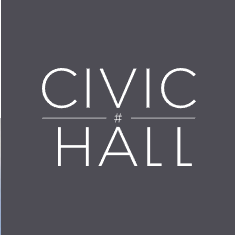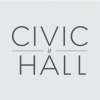NEW BOOK LOOKS AT PARTICIPATORY BUDGETING AS CIVIC TECH TREND
- JESSICA MCKENZIE
- February 1, 2016
- 1:43 pm

Last week the Ash Institute For Democratic Governance and Innovation published Civicist contributor Hollie Russon Gilman’s first book, Democracy Reinvented: Participatory Budgeting and Civic Innovation in America. What follows is a short Q&A with Gilman about her new book and what the future may hold for participatory budgeting and other civic technology trends.
Civicist: First of all, participatory budgeting is relatively new to the U.S. Although it started in Brazil in 1989, it wasn’t practiced in the U.S. until 2009, and is still quite rare. How is participatory budgeting different in the United States than in other countries?
Hollie Russon Gilman: That’s a great question. Participatory Budgeting (PB) in the United States has so far been working through existing political structures. In some places PB becomes its own structure alongside traditional bureaucracy. The U.S. process has often been implemented on the district level with elected leaders who have capital funds—things that can fund bricks and mortar. In other places, PB funds sometimes come from a centralized pot and are not always limited to capital funds. The amount of money being put into the process in some places is much higher. For example Paris is putting 426 million euros into the process over a six-year period.
Is there a canonical definition of participatory budgeting?
While there are numerous exact definitions of PB, some that are more or less binding, for the tenets of the book I define PB as: (1) a replicable decision-making process whereby citizens, (2) deliberate publicly over the distribution of, (3) limited public resources, arriving at decisions which are then implemented.
The New York Times has called participatory budgeting “revolutionary civics.” How “revolutionary” is it, really?
I think its revolutionary in so far as it is simply about empowering citizens to make governance decisions. In theory, this is not revolutionary at all! But our politics have become so partisan and contested; the very concept of bringing diverse people together has started to seem revolutionary. Perhaps, the most revolutionary aspect is that PB is simply returning politics to a more localized ideal.
The book includes several in-depth case studies; which did you find to be the most interesting or surprising?
Time and time again I saw people who became involved from initial curiosity, or even skepticism, become deeply engaged and staying involved over the course of several months. People stayed because they found the process to be fulfilling and they often forged new connections with neighbors, elected officials, and their community. These relationships were profound and often transformative.
What are some of the biggest challenges facing participatory budgeting and other efforts to increase civic engagement?
A process like participatory budgeting requires resources and time to effectively engage people, including from elected officials, civil society leaders, and people. Further, the funds to run process itself can be difficult to fund raise around. The process is very well structured which takes hard work. In New York City, the Participatory Budgeting Project has worked closely with Community Voices Heard, a local membership based organization that focuses on women of color and low-income families, to support and expand the process.
What are some of the key policy recommendations you make to encourage these kinds of participatory practices?
I have worked with some government officials who are excited to engage citizens in decision making but are also concerned about how to manage the floodgates of citizen input. There is a general concern that in an environment where people are already overworked and understaffed that engaging people without adequate staffing capacity will lead to deleterious results. One potential recommendation is to work closely with allies and strategic partners, including foundations, civil society, and universities, who can lend additional capacity. Another recommendation is to create processes that are fully transparent from the onset. This can help manage participants’ expectations throughout. People understand that some public sector employees have limited capacity; explaining a process to people, including its limitations, can go a long way.
What should we be looking for in the next few years? What’s the next big participatory thing, do you think? What, if anything, should we be wary of?
We will continue to see experiments combining online and offline tools. I think this can offer many exciting opportunities for reducing barriers to entry and engaging previously marginalized residents. As we often talk about with technology, it can be used to strengthen and support participation but we also need to ensure that it supplements, not entirely replaces, face-to-face participation. As further digital tools are integrated into participatory mechanisms, questions surrounding access, equity, privacy, and digital literacy will be front and center.
Can you elaborate on how PB is incorporating online tools?
In 2015 New York’s PB used electronic ballot counting and a partnership with Textizen, which started as a Code for America project. The City Council has created a web-based mapping tool for gathering crowdsourced public input for project submissions. The geo-targeted maps enable people to drop a pin on a map and provide ideas, suggestions, and comments. The maps are powered by OpenPlans open source technology. As covered by Jessica McKenzie on Civicist, in the 2015 PB vote, New York City employed a digital ballot experiment with both iPads for mobile kiosks and computers for in-person voting. They partnered with Stanford University’s Crowdsourced Democracy Team and Democracy 2.1 to test alternative ways of voting with the goal to make voting “as easy an ATM.” For 2016, New York’s PB is slated to conduct the first-ever remote online voting with an integrated online/offline ballot.
This reflects the push throughout global deployments of PB to use more digital interfaces and explore the opportunity for SMS to reach non-traditional participants. The first use of SMS was in 2004 in Ipatinga, Brazil. A World Bank pilot in the city of Jarabacoa, in the Dominican Republic, used SMS to encourage face-to-face participation, using a message targeted specifically at women. As Rafael Cardoso Sampaio and Tiago Peixoto note in Hope for Democracy: 25 Years of Participatory Budgeting Worldwide, “online voting can be seen as the gateway for politically inactive or less active citizens. The fact that online participation is generally more affordable can certainly be an extra attraction.”
I am optimistic for the opportunity to leverage civic tech combined a place-based local approach to engage citizens.







